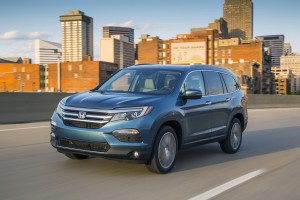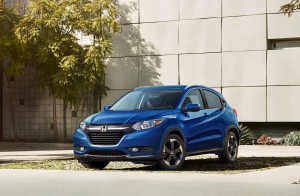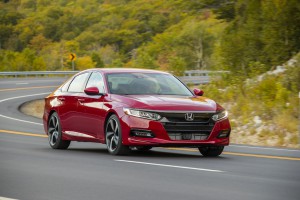
Strong momentum for the Pilot means Honda's trucks will likely outsell passenger cars, including the all-new Accord, this year.
Its traditionally been known for popular sedans and coupes like the Accord and Civic, but unless there’s a sudden shift in demand, Honda will end the year with its light truck line-up dominating its U.S. sales.
The automaker’s luxury arm, Acura, has largely been dependent on crossovers like the RDX and MDX for a number of years, but Honda had continued to buck the light truck trend – at least until this year. Through the end of July, Honda-branded utility vehicles, minivans and pickups rang up sales of 434,169 vehicles in the U.S., while familiar passenger car models managed only 406,357 sales.
The shift in demand is leading Japan’s second-largest automaker to not only shift production at its North American assembly lines, but also look at its product mix. During the last several years, Honda has added the entry-level HR-V crossover to its line-up and brought back the Ridgeline pickup. Few observers would be surprised to see it follow the path of crosstown rivals Toyota and Honda and add even more light trucks to its portfolio in the years ahead.
The boon in light trucks is becoming a global phenomenon, but few markets have experienced a more dramatic shift than the U.S. where utility vehicles alone now account for half of all new product sales. Add in vans and pickups and that surges to nearly two out of three new vehicles sold during the first seven months of 2018.
(Honda finally nails it with new Insight. Click Here for the story.)
That’s actually been posing a challenge for some import brands. Toyota, for one, has struggled to keep up with changing market conditions and has had to import some of its popular RAV4 small utes from Japan. The RAV4 last year marked a historic moment, toppling Toyota’s long-time king-of-the-hill Camry sedan as the brand’s best-seller in the U.S.
Perhaps no product underscores the transition in the market more than the 2018 Honda Accord. The sedan got a ground-up makeover and has scored big with the critics, among other things winning the coveted North American Car of the Year trophy. But motorists have been less impressed, Accord sales tumbling 19.3% in July when compared to demand for the old model a year earlier. For the year-to-date, Accord was down 14.5%.
The smaller Civic has never been offered with more variants, including the new, high-performance Type-R. But July sales plunged 28.3%, while demand was off 4.7% for the first seven months of the year.
Only two Honda-brand passenger car models showed gains, but that’s because the automaker has added new versions of the Clarity, now available as a hydrogen fuel-cell vehicle, a plug-in hybrid or an all-electric. And the Insight hybrid returned after a several year absence.
(Click Here for details about GM and Honda partnering on new battery technology.)
The overall U.S. market has been wobbly in recent months, and took a sharp tumble in July, but you might not know that from Honda’s light truck line-up. After a slow start – it’s off 3.0% for the year – the CR-V posted a 3.4% sales gain in July. The Pilot is up 38.5% for the year and gained 35.9% last month.
The midsize Ridgeline pickup, which has garnered mixed reviews, was off 17.5% for the year but has been gaining momentum in recent months, its sales off a more modest 3.8% in July, or roughly on par with the overall slump in the U.S. automotive market.
If anything, Honda’s trucks may not be doing as well as they should because of strained capacity. The automaker recently made changes. The CR-V has been rolling off the company’s East Liberty, Ohio plant for some time. It recently added some production capacity for the crossover at the nearby Marysville plant.
While the car-truck sales gap is narrow but growing for the Honda brand, the shift has been especially apparent at the upscale Acura division. The high-line brand is down about 2.4% for the year, again in line with the overall U.S. new vehicle slump. But a closer look reveals it has sold only 26,502 passenger cars since the beginning of the year, compared to 59,398 crossovers. The gap would be even greater but for the success of the latest-generation RDX sedan, which scored a 72.9% sales jump through the end of July.
(To see more about Honda kicking off production of two new models, Click Here.)
With conventional SUVs and more modern CUVs now accounting for more than half the overall market, industry analysts and planners predict the rapid shift from cars to trucks may begin to moderate, but there appears to still be more room for growth over the next several years. It remains to be seen what steps Honda may take next to profit from the shift.


